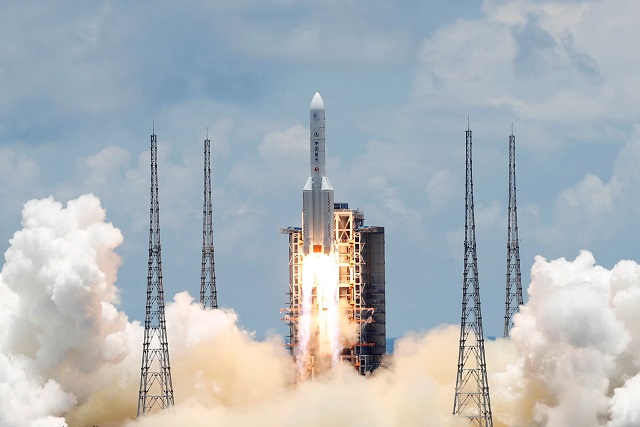
Beijing, China | XINHUA | China successfully launched its first Mars mission on Thursday. Here are some fast facts about Mars and the mission:
— What is the terrain like on Mars?
Mars has a variety of terrains including mountains, plains and canyons. Its southern hemisphere is full of highlands and canyons with meteorite craters, and the northern hemisphere has mostly plains formed by lava.
— How is Mars similar to Earth?
Of the eight planets in our solar system, Mars is the closest to Earth in physical and chemical properties. It has similar axial tilt and rotation period, so the length of day and night as well as the change of seasons on Mars are almost the same as those on Earth.
However, Mars runs in an obviously elliptical orbit around the Sun, taking 687 days for a round trip, which is about two Earth years.
With the closest environment to Earth in the solar system, Mars has become a priority target for manned exploration of another planet.
— How did the ancient Chinese view Mars?
The ancient Chinese called Mars “Yinghuo”, which literally means dazzling and confusing. They were confused by the irregular and unpredictable movements of Mars when observing it from the ground.
Ancient Chinese emperors paid special attention to Mars, and its unusual movements were often related to natural disasters, changes of dynasties and deaths of emperors.
— Why did China choose to launch its Mars mission in July 2020?
Considering the risks, costs and other factors, a Hohmann transfer orbit is the best route to Mars.
The Hohmann transfer, proposed in the 1920s by German engineer Walter Hohmann, is the most commonly used method to move a spaceship from a lower orbit to a higher one.
A Hohmann transfer orbit from Earth to Mars forms every 26 months, falling in the summer this year. The United States, China and the United Arab Emirates all announced Mars exploration missions this year.
— How many Mars exploration missions have been carried out?
Before 2020, a total of 44 Mars exploration missions had been carried out, and 24 were successful. At present, eight probes are still working in Mars orbit or on its surface.
— Why is China’s first Mars mission named Tianwen-1?
Tianwen-1, meaning Questions to Heaven, comes from a poem by Qu Yuan (about 340-278 BC), one of the greatest poets of ancient China.
The poem questions almost all the phenomena of heaven and Earth, such as the origin and structure of the universe, and the movement of celestial bodies. The name signifies the Chinese nation’s perseverance in pursuing truth and science and exploring nature and the universe.
— How long will China’s Mars probe take to get to Mars?
It will take Tianwen-1 almost seven months to travel to Mars. It is expected to reach the red planet around February 2021. After entering orbit, it will spend another two to three months surveying the candidate landing sites before landing.
— What is China’s Mars mission expected to achieve?
The scientific goals include mapping the morphology and geological structure, investigating the surface soil characteristics and water-ice distribution, analyzing the surface material composition, measuring the ionosphere and the characteristics of the climate and environment at the surface, and perceiving the physical fields and internal structure of Mars.
******
XINHUA
 The Independent Uganda: You get the Truth we Pay the Price
The Independent Uganda: You get the Truth we Pay the Price



